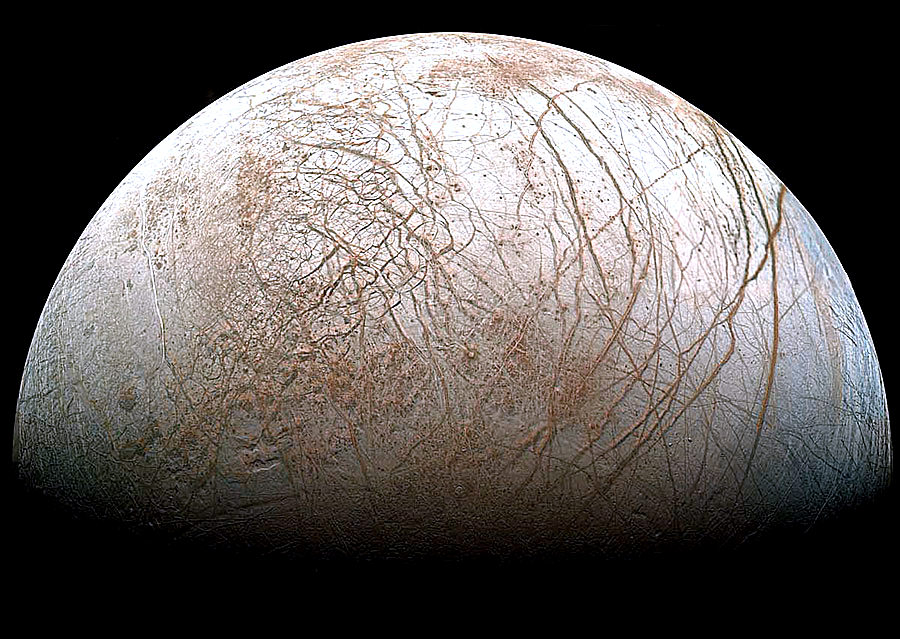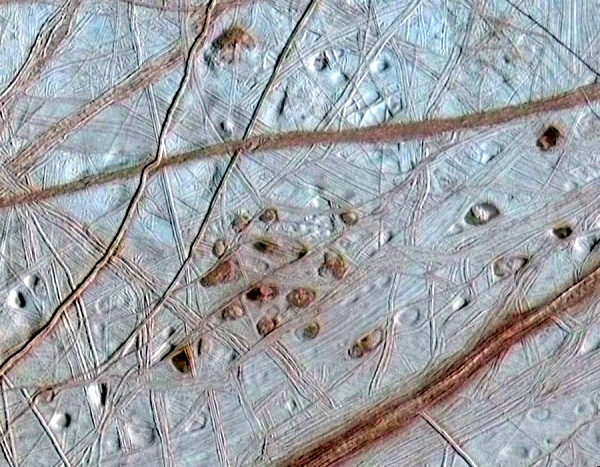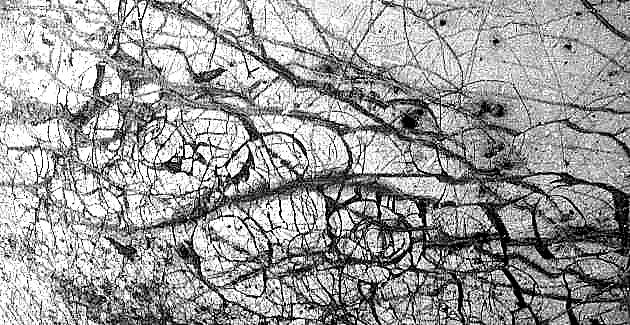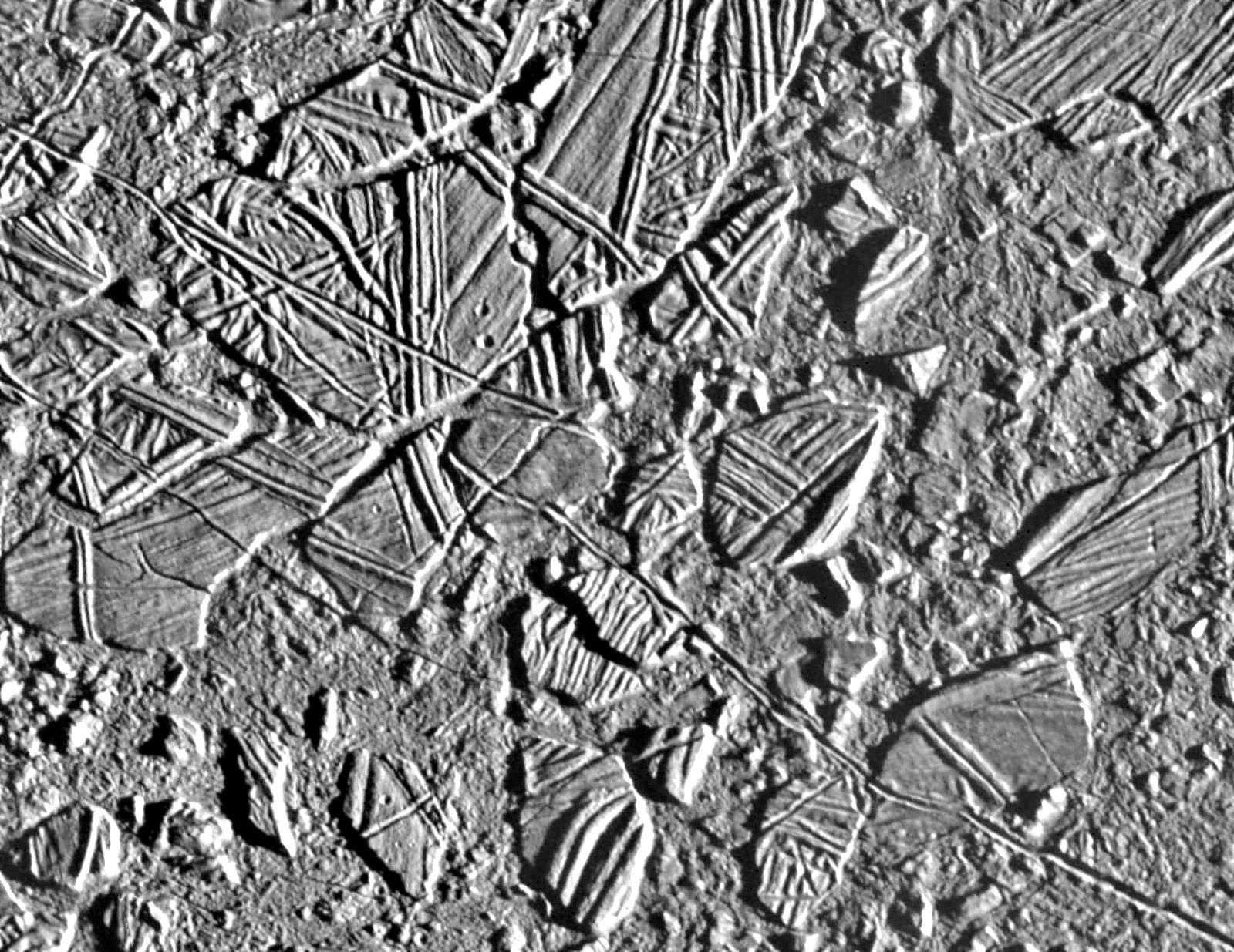Perhaps Life 2.0?
Europa ocean, artist conception (credit: JPL/NASA)
The ground-breaking epic, 2001, A Space Odyssey, captivated audiences with the idea that life might exist on Europa, one of the four moons of Jupiter discovered by Galileo Galilei in 1610. That curiosity hasn't been resolved by real observations since Stanley Kubrick's film premiered 50 some years ago. However, data and images from NASA's Galileo mission, that orbited the gas giant for eight years, pointed to a global ocean under the ice rind on the distant moon.
The Jet Propulsion Laboratory (JPL) at Caltech re-edited Galileo's photos and captured tantalizing details of Europa's distorted surface. The colored pits, streaks, and ice blocks look like pieces of a huge jig-saw puzzle covering the moon's surface. In places, the images look similar to the ice pack at the Earth's North Pole or broken sea ice floating around Antarctica.


Europa global view (credit: Galileo/JPL/NASA) Europa ice eruption pits (credit: Salileo/JPL/NASA


Europa fractured ice flows (credit: Galileo/JPL/NASA) Europa Chaotic ice flows (credit: Galileo/JPL/NASA)
The images themselves are amazing but the question remains what may lie beneath. NASA and JPL have embarked on a grand adventure of true discovery, the Europa Clipper. The mission will launch in 2024 to orbit Jupiter and make multiple fly-bys of the mysterious moon. According to the Lab, it will conduct detailed investigations of Europa to confirm the strong evidence for a liquid water ocean beneath its crust. Various instruments will make spectrographic, chemical, and radar analyses to determine if Europa offers the conditions favorable for life. It is even possible chemical compound 'signatures' measured from scans of the moon's surface are biological in nature. If they match anything similar on Earth, exo-biology or life 2.0 beyond Earth, may be discovered. Besides that existential discovery, it would answer a question in a popular movie more than 50 years old.
A video describes the new Europa Clipper mission and its upcoming goals once at Jupiter. WHB